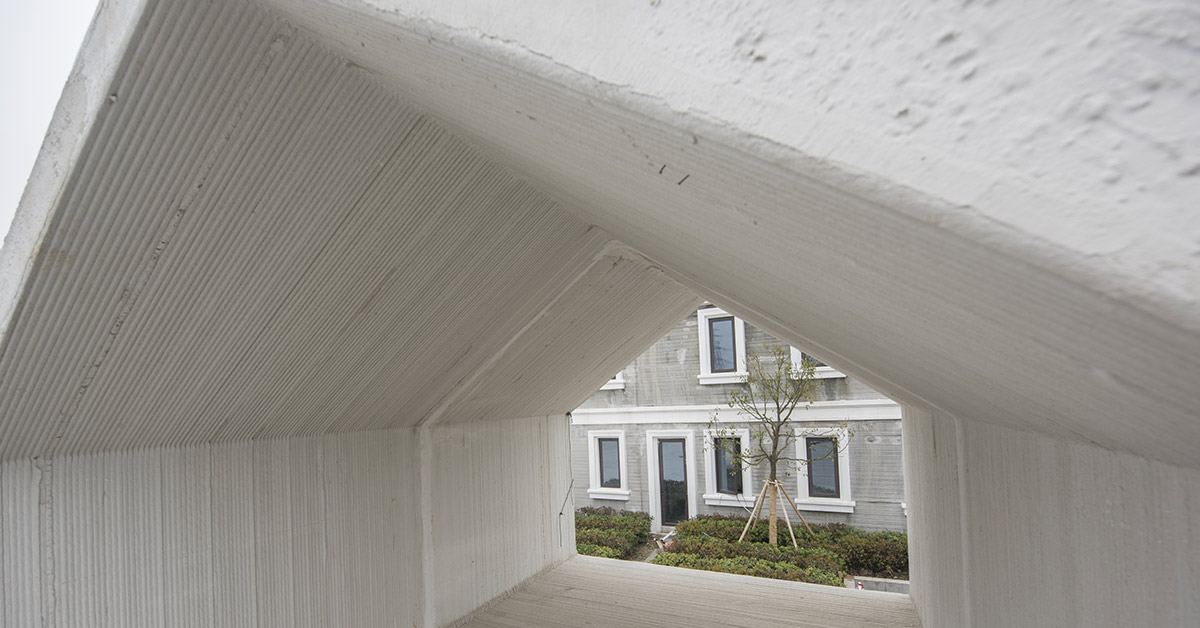The first-ever 3D-printed tiny house now has its first occupant. The tiny house design from ICON has transformed from a concept into a practical living solution. As has the life of Tim Shea, a man homeless up until this point been transformed as the first 3D-printed tiny house resident. It shows that this project is not only a success in sustainable housing, it also changes lives. So, let’s take a closer look at the story of Tim Shea and how ICON is providing relief for adults who have been without shelter for years.
The first 3d-printed tiny house
In March 2018, the NPO, New Story, alongside ICON, the tech innovators, launched the first 3D-printed tiny house in the USA, with an official permit in Austin, Texas.[1]
ICON stated later on their website:
“We’ve used that support to develop robotics, software, and materials as our core technology for our partners and home buyers. The strength of these products has been proven further through many projects since that first house, with more to come soon.”
Late 2019 saw another ICON and New Story collaboration, this time in Mexico. Together the two companies developed a whole 3D-printed tiny house community.
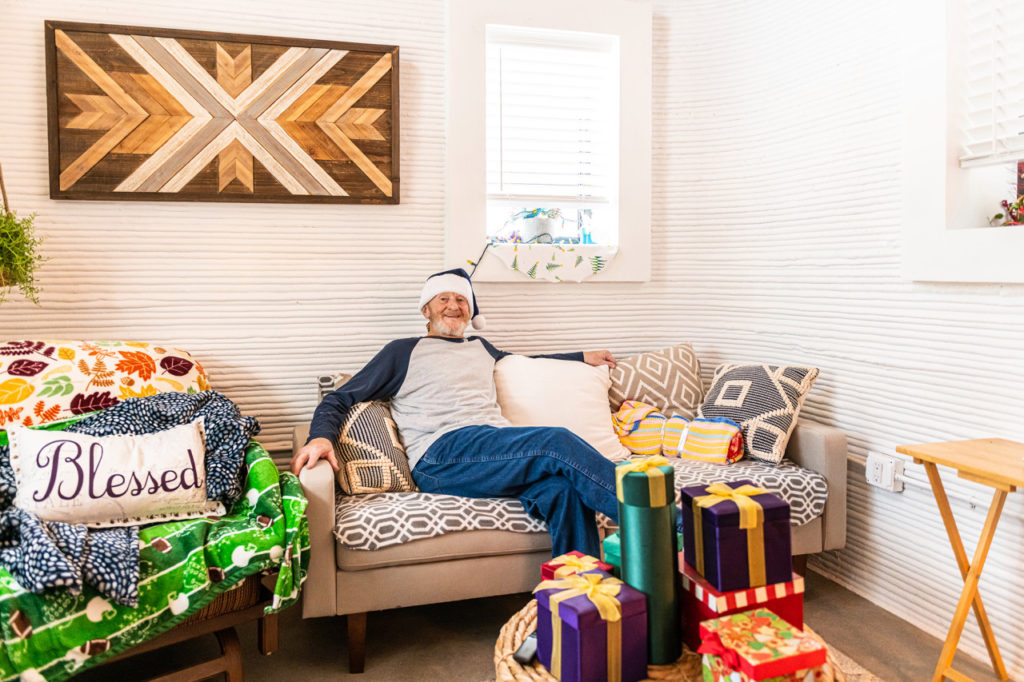
KHN found out in March 2020, that ICON planned to build the first 3D-printed tiny house village in Austin. The proposed development would consist of 6 tiny homes for the relief of previously destitute adults. This initiative was carried out by the social outreach group, Mobile Loaves & Fishes. The newsgroup said that 69-year-old Tim Shea would be the first to move into a 3D-printed tiny house.[2]
First ever 3d-printed tiny house resident in the USA
The construction of the first house was finished by the fall of 2020. During the month of March 2020, The New York Post revealed that Shea had taken up residency in his 3D-printed tiny house in September past. This meant he was the first-ever tiny house resident in the USA. The NY Post said that he had battled with his addiction to heroin in the past and had been previously without permanent shelter, living in an RV up until then. While Shea lives in his 400 sq. ft. 3D-printed tiny house at just $300 each month, he also has access to programs run by the Community First! The village, in aid of those previously without homes.[1]
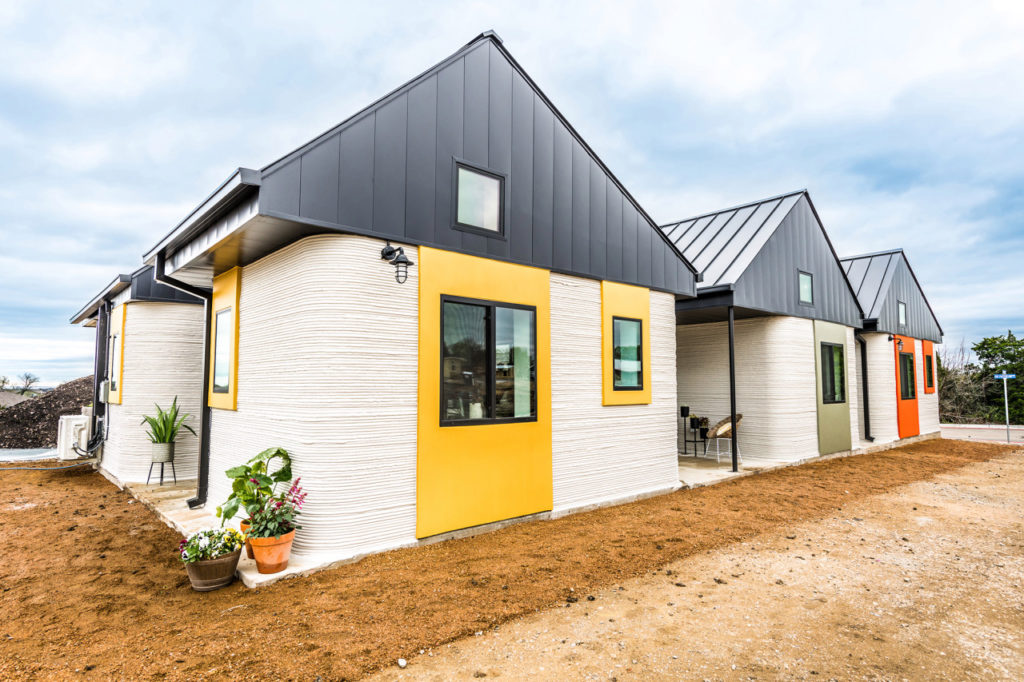
He explained to the NY Post;
“When I found out I’d be the first person in America to move into a 3D-printed home, I thought it was pretty awesome. The very people I used to run away from, I’m running to. If you’ve been on both sides of the fence, you know some people just need a little encouragement and support.”
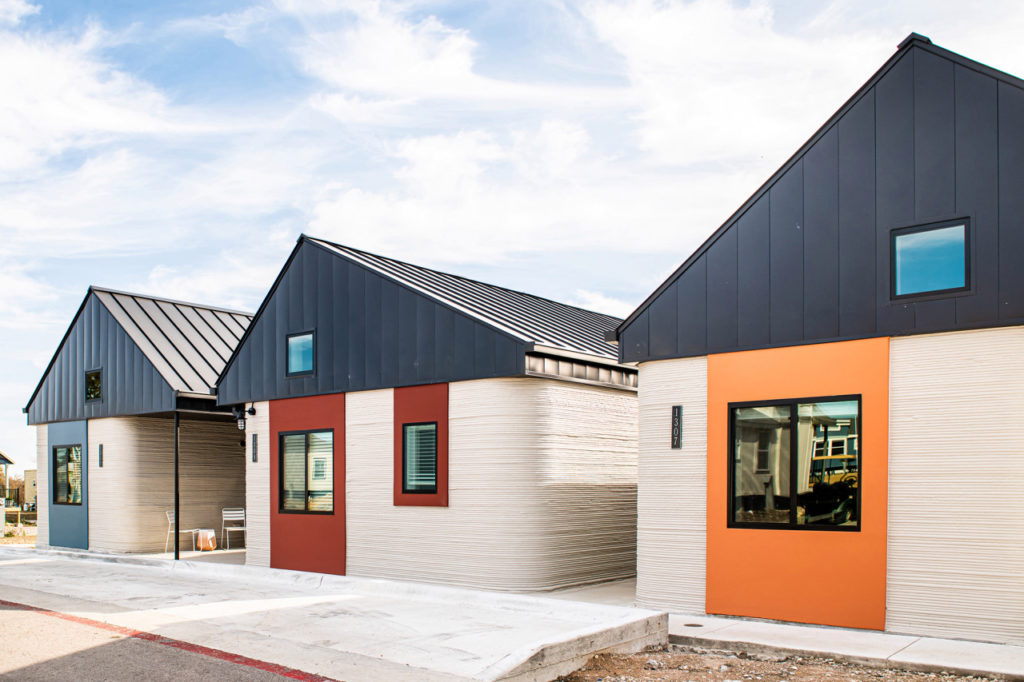
In this newfound environment with the village’s help, Shea said his life has been transformed.
“Everything I do is just the opposite, and I have many activities to do every day with others.”
How the house was made
The materials of a 3D-printed tiny house from ICON take under 48 hours to print. Printing is done with their 3D printer, Vulcan II. In 2019, ICON CEO Jason Ballard told Green Matters that the houses are made from Lavacrete. Their own formula of Portland Cement-based concrete. The printing process is strangely entertaining to behold. The Vulcan II produces the entire wall structure of the house with Lavacrete.[2]
Concrete may not be generally thought of as an eco-friendly building material. However, Ballard said its durability is ideal for the construction of a 3D-printed tiny house. This “is going to last a lot longer than most conventional building materials,” Ballard explained. “So we think that on the full, zoom-out, wide analysis, that the slightly higher embodied energy of using a material like concrete is outweighed in the long run by transitioning to a way of building that’s much, much more resistant.” A concrete 3D-printed tiny house is built to withstand any natural disaster or freak weather patterns that may occur in and around Austin, Texas.[2]
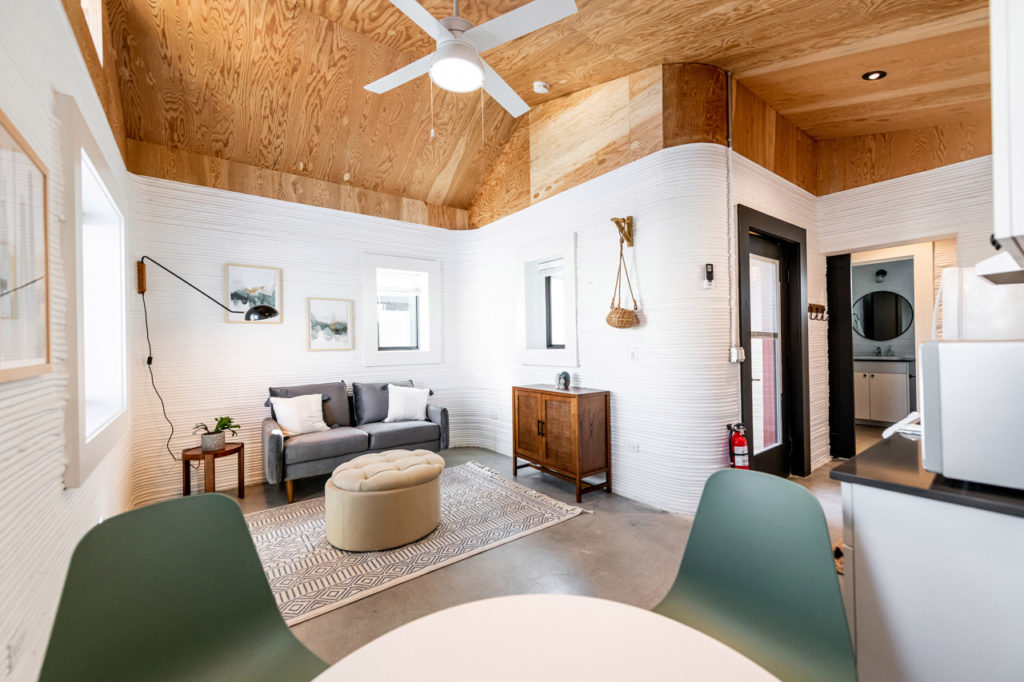
The CEO of New Story, Brett Hagler, stated that the production of a 3D-printed tiny house results in “substantially less waste versus traditional construction.” In 2019, he revealed that “The printer only uses the concrete that is needed, so there’s no waste of construction materials with each home.”[1]
ICON explained that a 3D-printed tiny house’s production costs are approximately 20-30% less than one made using traditional construction methods. While Hagler stated that the funding for these projects came through fundraising and donations.[2]
Keep Reading: Man Converts Ambulance Into Tiny Home on Wheels for $13,000
Sources
- “Homeless man becomes first person to live in 3D-printed house — see inside.” NY Post. Mary K Jacob.
- “Homeless Man Gets To Live In A 3D-Printed Tiny Home.” Bored Panda. Liucija Adomaite, Austėja Akavickaitė. March 2021.
